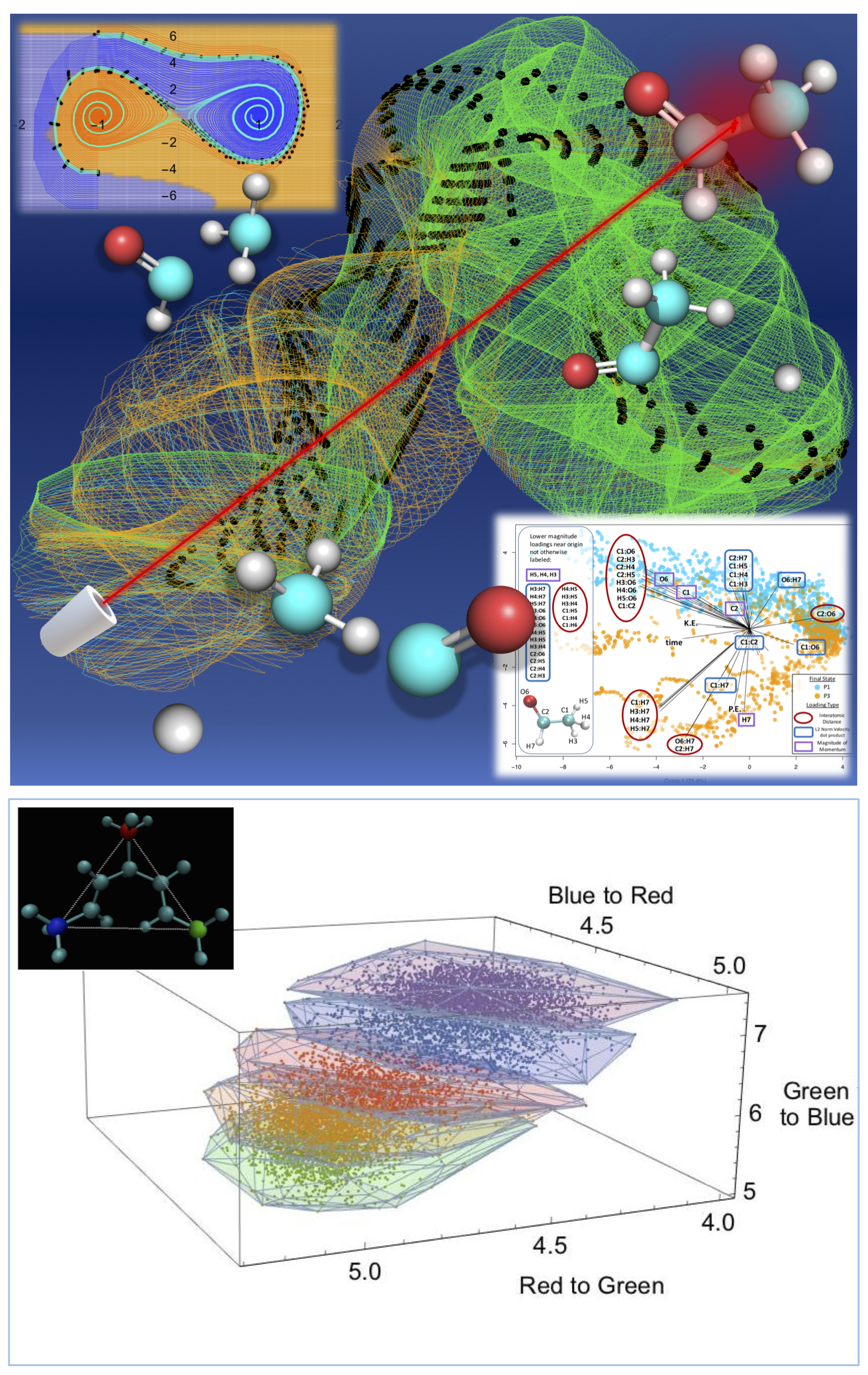
Molecular Dynamics Methods Development
I have developed 4 different methods for enhanced sampling of molecular dynamics simulations (3 published in Journal of Chemical Physics, 1 published in Journal of Chemical Information and Modeling). My future plans include both further work in this vein of theory and methods development, implementation of my methods into more generalized (and publicly available) software, and the application of molecular simulations toward the study of systems of relevance to health or the environment. For a few examples of this type of work, please see the following links:
Advances in milestoning. I. Enhanced sampling via wind-assisted reweighted milestoning (WARM):
https://aip.scitation.org/doi/abs/10.1063/1.5029954
Advances in milestoning. II. Calculating time-correlation functions from milestoning using stochastic path integrals:
https://aip.scitation.org/doi/abs/10.1063/1.5037482
Automated placement of interfaces in conformational kinetics calculations using machine learning:
https://aip.scitation.org/doi/abs/10.1063/1.4989857
m1A and m1G disrupt A-RNA structure through the intrinsic instability of Hoogsteen base pairs:
Machine Learning Applications for the Molecular Sciences
Another main focus of my research is the development of machine learning-based methods for molecular science applications, such as guiding molecular simulations and interpreting their results. I have developed machine learning-based methodologies for studying the kinetics of configurational changes in complex macromolecules, an interpretable machine-learning classifier methodology for predicting reaction products from quantum dynamical trajectories produced by ab initio molecular simulations, and contributed to the development a neural network-based approach for predicting higher resolution atomistic structures from purely topological network-based coarse-grained descriptions. I am also interested in developing machine learning-based methodology for interpreting experimental data. For examples of this type of work, please see the following links:
Predicting Reaction Products and Automating Reactive Trajectory Characterization in Molecular Simulations with Support Vector Machines:
https://pubs.acs.org/doi/abs/10.1021/acs.jcim.9b00134
Comparative Exploratory Analysis of Intrinsically Disordered Protein Dynamics Using Machine Learning and Network Analytic Methods:
https://doi.org/10.3389/fmolb.2019.00042
Automated placement of interfaces in conformational kinetics calculations using machine learning:
https://aip.scitation.org/doi/abs/10.1063/1.4989857
Neural Upscaling from Residue-level Protein Structure Networks to Atomistic Structure:


Coarse-grained Modeling of Biophysical Systems
My third research focus is the development of coarse-grained modeling techniques for molecular systems whose complexity make atomistic models intractable on the time scales of interest. I have built models for phenomena such as protein aggregation, specifically the self-assembly of amyloid fibrils, and force-modulated catalytic activity of the enzyme thioredoxyn. For examples of this type of work, please see the following:
Network-Based Classification and Modeling of Amyloid Fibrils:
https://pubs.acs.org/doi/abs/10.1021/acs.jpcb.9b03494
Local Graph Stability in Exponential Family Random Graph Models:
https://epubs.siam.org/doi/10.1137/19M1286864
Network Hamiltonian Models Reveal Pathways to Amyloid Fibril Formation:
https://www.nature.com/articles/s41598-020-72260-8
A Fokker-Planck type model of force-modulated catalytic activity in thioredoxyn:
https://aip.scitation.org/doi/abs/10.1063/1.4926664
Network Hamiltonian Coarse-grained Models of Self-Assembly
This video offers a "lightning talk" style description of a type of coarse-grained modeling that I do, which uses network Hamiltonians to model molecular self-assembly (e.g. amyloid fibril formation).
Google Scholar Profile
If you are interested in reading more about my research, please click on the link to the right to see my Google Scholar profile.